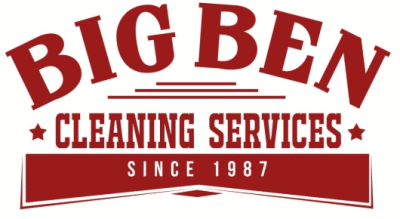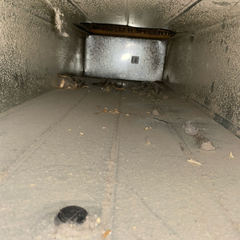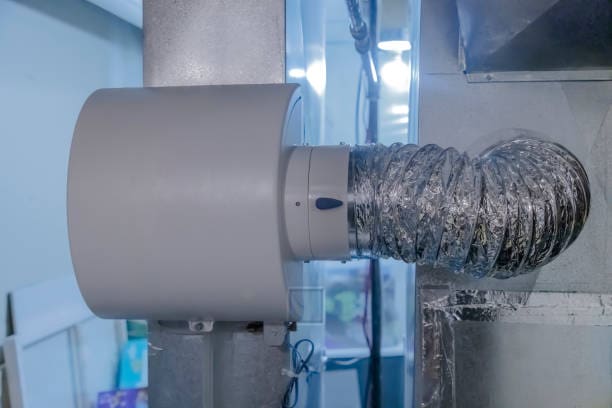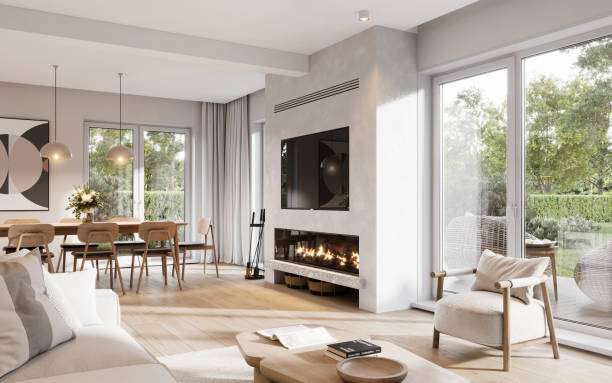Indoor air quality (IAQ) is a critical factor in maintaining a healthy living environment, yet it’s often overlooked. One of the main contributors to poor IAQ is the heating, ventilation, and air conditioning (HVAC) system. While HVAC systems are designed to regulate temperature and keep us comfortable, they can also play a significant role in circulating pollutants throughout your home or office. This blog explores the relationship between dirty ducts and indoor air pollution, and why maintaining a clean HVAC system is essential for healthy air.
The Hidden Threat in HVAC Systems
At the core of every HVAC system is a series of ducts that transport air throughout a building. Over time, these ducts can accumulate dust, dirt, pet dander, mold, and even harmful microorganisms. When an HVAC system cycles air through these dirty ducts, it can push contaminants back into your living space, effectively turning your system into a distributor of indoor pollutants.
Indoor pollutants can exacerbate health issues such as allergies, asthma, and other respiratory conditions. According to the EPA, indoor air can often be more polluted than outdoor air, making the cleanliness of your HVAC system all the more crucial.
Common Pollutants Found in HVAC Systems
A variety of pollutants can accumulate in HVAC systems, contributing to poor IAQ:
- Dust and Debris: Over time, dust from household activities and outdoor particles can build up in the ducts. Without proper filtration or cleaning, these particles circulate with every use of the HVAC system.
- Mold and Mildew: In humid environments, moisture can build up in ducts, creating the perfect environment for mold and mildew. Mold spores can be particularly harmful, especially for individuals with respiratory sensitivities.
- Pet Dander: For pet owners, hair and skin flakes from animals can accumulate in ducts and spread throughout the home.
How Dirty Ducts Impact Indoor Air Quality
Dirty ducts reduce the efficiency of your HVAC system and worsen indoor air pollution. Here’s how it happens:
- Recirculation of Pollutants: Every time your HVAC system operates, it pulls in air, heats or cools it, and sends it back through the ducts. If your ducts are dirty, this air picks up pollutants and redistributes them through your living or working space.
- Strain on the System: Dust and debris buildup can cause the HVAC system to work harder than necessary, reducing its efficiency and lifespan. The more energy your system uses to function, the more likely it is to overheat, fail, or even cause mechanical breakdowns.
- Increased Respiratory Problems: Pollutants like mold, dust, and pet dander can lead to or exacerbate respiratory conditions. Individuals with asthma, allergies, or weakened immune systems are particularly vulnerable to the effects of dirty ducts. Even for those without pre-existing conditions, prolonged exposure to indoor air pollution can lead to headaches, fatigue, or respiratory irritation.
Signs Your HVAC System Needs Cleaning
How can you tell if your HVAC system might be contributing to indoor air pollution? Here are a few key indicators:
- Dust Buildup Around Vents: If you notice dust accumulating around air vents, it’s likely a sign that the ducts are clogged with debris.
- Unpleasant Odors: Musty or foul odors coming from your HVAC system can signal the presence of mold or mildew in the ducts.
- Frequent Allergies or Respiratory Issues: If you or family members experience increased allergy symptoms, coughing, or respiratory irritation when the HVAC system is on, dirty ducts could be the culprit.
- Increased Energy Bills: When your HVAC system is clogged with dust and debris, it has to work harder to heat or cool your home, which leads to higher energy consumption.
How to Improve Indoor Air Quality
- Regular Duct Cleaning: Having your ducts professionally cleaned every 3 to 5 years can significantly reduce indoor pollutants and improve air quality. In homes with pets, smokers, or recent renovations, more frequent cleaning may be necessary.
- Change Air Filters Regularly: Filters are the first line of defense against pollutants entering your HVAC system. Change them every 1 to 3 months, depending on the type of filter and usage level.
- Control Humidity Levels: Keep humidity levels between 30% and 50% to prevent mold growth in your ducts and home. Using a dehumidifier during humid months can help maintain this balance.
- Seal and Insulate Ducts: Leaky ducts can introduce dust and debris from unconditioned spaces like attics or basements. Sealing and insulating ducts ensures the air flowing through your home is clean and pollutant-free.
A clean HVAC system isn’t just about comfort—it’s a critical component of maintaining a healthy indoor environment. Dirty ducts lead to dirty air, which can exacerbate health problems, reduce system efficiency, and increase energy costs. By understanding the connection between your HVAC system and indoor pollution, and by taking proactive steps to maintain a clean system, you can breathe easier knowing that your indoor air is as clean as possible.
Give us a call today to find out more at 403 460 8989




